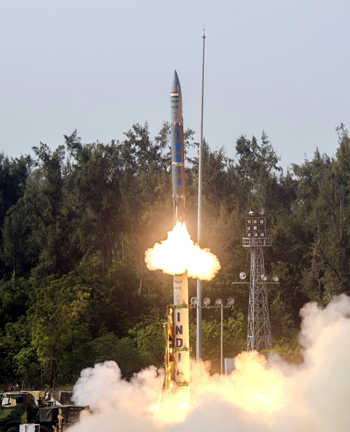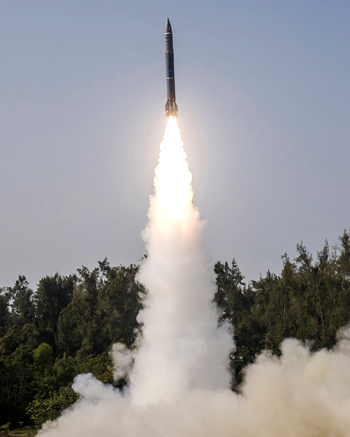INDIAN ARMED FORCES CHIEFS ON OUR RELENTLESS AND FOCUSED PUBLISHING EFFORTS

The insightful articles, inspiring narrations and analytical perspectives presented by the Editorial Team, establish an alluring connect with the reader. My compliments and best wishes to SP Guide Publications.

"Over the past 60 years, the growth of SP Guide Publications has mirrored the rising stature of Indian Navy. Its well-researched and informative magazines on Defence and Aerospace sector have served to shape an educated opinion of our military personnel, policy makers and the public alike. I wish SP's Publication team continued success, fair winds and following seas in all future endeavour!"

Since, its inception in 1964, SP Guide Publications has consistently demonstrated commitment to high-quality journalism in the aerospace and defence sectors, earning a well-deserved reputation as Asia's largest media house in this domain. I wish SP Guide Publications continued success in its pursuit of excellence.
- Prime Minister Modi Visits Punjab’s Adampur Air Base, Interacts with Airmen after Successful ‘Operation Sindoor’; Stern Message to Pakistan
- The layered Air Defence systems that worked superbly, the key element of Operation Sindoor
- Operation Sindoor | Day 2 DGMOs Briefing
- Operation Sindoor: Resolute yet Restrained
- India's Operation Sindoor Sends a Clear Message to Terror and the World – ‘ZERO TOLERANCE’
- Japan and India set forth a defence cooperation consultancy framework, talks on tank and jet engines
Pralay Induction
The system meets the tactical ballistic missile requirements filling the gap of a conventionally armed ballistic missile that is not hampered by the 'No First Use' nuclear policy
 |
The Author is Former Director General of Information Systems and A Special Forces Veteran, Indian Army |

News reports of December 25, 2022 quoting defence sources have said that the Ministry of Defence (MoD) has cleared a proposal to procure around 120 ‘Pralay’ ballistic missiles that would be deployed along the borders with China and Pakistan. The news is that this missile will be first inducted into the Indian Air Force (IAF) followed by the Indian Army (IA).
Pralay is a canisterised tactical, surface-to-surface, short range ballistic missile (SRBM) developed by the Defence Research and Development Organisation (DRDO). It uses the technologies developed for exoatmospheric interceptor missile Prithvi Defence Vehicle (PDV) and the Prahar tactical missile. The project to develop Pralay was sanctioned in March 2015 with a budget of 332.88 crore.
Powered by solid fuel rocket motor, the Pralay missile follows quasi-ballistic trajectory and is able to perform mid-air maneuvers using maneuverable re-entry vehicle (MaRV) to defeat anti-ballistic missile (ABM) interceptors. Pralay uses the same composite propellant developed by High Energy Materials Research Laboratory (HEMRL) for ‘Sagarika’. The composite propellant is highly efficient and generates more energy compared to propellant used in the ‘Agni’ missiles. Foreign missiles in the class of Pralay missile include the Dongfeng 12 (CSS-X-15) of China, and precision strike missiles like the Russian 9K720 Iskander and the Hyunmoo 2 of South Korea.
This is the first time that two flight tests of any ballistic missiles have been conducted successfully on two consecutive days and met all the mission objectives in both the configurations of the missile

The engine of the Pralay missile is a two stage rocket motor with third stage MaRV. It uses an inertial guidance system for navigation, maximum speed in terminal phase is Mach-1 and accuracy is <10 metres CEP. The launch platform is an 8x8 BEML Tatra transporter erector launcher. The missile carries 350-700 kg high explosive fragmentation warhead for penetration-cum-blast (PCB) and runway denial penetration submunition (RDPS) at a range of 150 km to 500 km. It is designed to target radar and communication installations, command and control centres and forward airfields using conventional warheads. The system is road mobile and meets the tactical ballistic missile requirements filling the gap of a conventionally armed ballistic missile that is not hampered by the ‘No First Use’ nuclear policy.
It is designed to target radar and communication installations, command and control centres and forward airfields using conventional warheads
The first trial of Pralay was conducted by the DRDO on December 22, 2021, DRDO from the Abdul Kalam Island. The missile followed a quasi ballistic trajectory reaching the designated target at 400 km with high degree of accuracy, validating the controls, guidance system and mission algorithms. The second trial was conducted on December 23, 2021 using a heavier payload to check the lethality and accuracy of the missile. The missile covered the maximum range of 500 km and was monitored by range sensors and instruments, including telemetry, radar and electro-optic tracking system deployed across the eastern coast and the downrange ships positioned near the impact point.
The development phase of Pralay began in 2015 and took four years to test the required technologies. DRDO was to conduct some four test flights before the missile being commissioned The missile was successfully tested on December 22 and December 23 before the MoD clearance for its procurement. This is the first time that two flight tests of any ballistic missiles have been conducted successfully on two consecutive days. These flight tests also met all the mission objectives in both the configurations of the missile. The impetus apparently was the recent skirmish along the Line of Actual Control (LAC) between the IA and China’s People's Liberation Army (PLA) in the area of Yangtse in Tawang.
The acquisition of the Pralay ballistic missiles is being seen as a big development for India which now has the policy to use ballistic missiles in tactical roles
The acquisition of the Pralay ballistic missiles is being seen as a big development for India which now has the policy to use ballistic missiles in tactical roles, especially since both China and Pakistan already have ballistic missiles which can be used at the tactical level. The MoD clearance to induct Pralay missiles into the IAF and the IA has come at a time when the military is working to establish a dedicated rocket force to take out enemy targets at long range. China already has a dedicated rocket force. The Pralay missile system can be used to target long range enemy air defences and other high value military installations and weaponry of the enemy.
The Pralay missile system would certainly prove to be an excellent force multiplier for the Indian Military. Given Beijing’s aggressive intentions, India needs to speedily catch up with China in terms of missiles, drones, hypersonic, cyber, space and the electromagnetic.





